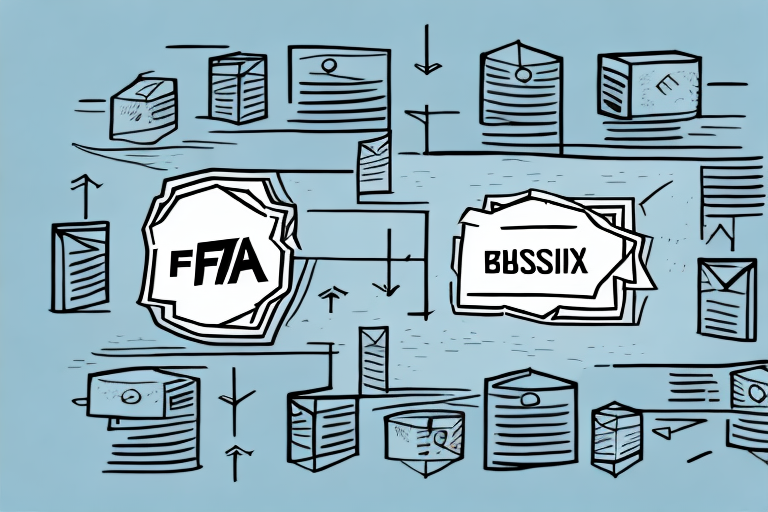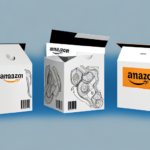Deciding Between FBA and FBM: What's the Right Choice for Your Business?
Choosing the right fulfillment method is crucial for the success of your eCommerce business. The two primary options are Fulfillment by Amazon (FBA) and Fulfillment by Merchant (FBM). This guide explores the advantages and disadvantages of each to help you make an informed decision.
Understanding FBA and FBM
What is FBA (Fulfillment by Amazon)?
FBA is a service offered by Amazon where they handle storage, packaging, shipping, and customer service for your products. When a customer places an order, Amazon takes care of picking, packing, and delivering the item, as well as handling returns and customer inquiries.
What is FBM (Fulfillment by Merchant)?
With FBM, you are responsible for storing, packaging, and shipping your products directly to customers. You also handle all customer service and return processes, giving you full control over the fulfillment experience.
Pros and Cons of FBA
Advantages of FBA
- Prime Eligibility: Products are eligible for Amazon Prime, attracting more customers seeking fast and free shipping.
- Scalability: Amazon's vast logistics network can handle high sales volumes, allowing your business to scale efficiently.
- Customer Service: Amazon manages customer service and returns, reducing your operational workload.
- Global Reach: FBA facilitates international shipping, enabling you to reach new markets effortlessly.
Disadvantages of FBA
- Higher Costs: FBA fees can add up, especially for small businesses or low-margin products.
- Less Control: Limited ability to customize packaging and branding, as Amazon handles the shipping process.
- Inventory Risks: Potential issues like inventory commingling can lead to product mix-ups and negative reviews.
- Unsuitable for Certain Products: Large, heavy, or perishable items may incur prohibitive shipping fees or logistical challenges.
Pros and Cons of FBM
Advantages of FBM
- Greater Control: Full authority over packaging, shipping, and customer interactions allows for personalized branding.
- Cost-Effective: Potentially lower fees, especially for businesses with smaller sales volumes or higher-margin products.
- Flexibility: Ability to handle non-FBA eligible items, such as oversized or fragile products.
- Enhanced Branding: Opportunity to include custom packaging, notes, and promotional materials to build brand loyalty.
Disadvantages of FBM
- Operational Burden: Responsible for all aspects of fulfillment, including storage, packing, shipping, and customer service.
- Scalability Challenges: Managing high order volumes can be resource-intensive and may require significant infrastructure.
- Shipping Limitations: May not offer the same fast shipping options as Amazon Prime, potentially affecting customer satisfaction.
- Increased Responsibility: Handling returns and customer service can be time-consuming and require dedicated support.
Cost Comparison: FBA vs. FBM
The cost-effectiveness of FBA and FBM varies based on factors like product size, weight, sales volume, and shipping destinations.
- FBA Costs: Include storage fees, fulfillment fees based on size and weight, and additional costs for long-term storage.
- FBM Costs: Involve shipping costs determined by your chosen carrier, storage expenses, and labor costs for packing and shipping.
It's essential to conduct a detailed cost analysis tailored to your business to determine which fulfillment method offers the best financial benefits.
Branding and Customer Experience
Branding is a significant factor when choosing between FBA and FBM. FBM allows you to use customized packaging and include personalized notes or promotional materials, enhancing brand recognition and fostering customer loyalty. In contrast, FBA shipments use Amazon-branded packaging, limiting opportunities for personalized branding.
However, FBA offers Amazon's Enhanced Brand Content (EBC) and Brand Registry programs, which allow for enhanced product listings and protection against counterfeit products, supporting brand integrity on the platform.
Choosing the Right Fulfillment Method for Your Business
Assessing Your Product Category
Consider the nature of your products when choosing a fulfillment method. Lightweight, small, and high-demand items are typically well-suited for FBA, while bulky, heavy, or low-demand products may be more efficiently managed through FBM.
Evaluating Your Resources
FBM requires adequate storage space and the resources to manage packing, shipping, and customer service. If your business lacks these resources, FBA might be the more practical option.
Considering Sales Volume
High sales volumes can benefit from FBA's scalability and efficient logistics, whereas lower sales volumes may find FBM more cost-effective due to lower fees and flexible operations.
Case Studies: Success with FBA and FBM
Businesses have achieved success with both FBA and FBM based on their specific needs and product types.
Successful FBA Implementation
For instance, a company selling small electronics experienced a 30% increase in sales by leveraging FBA's Prime eligibility and Amazon's extensive logistics network (Read more).
Effective FBM Strategies
A furniture retailer reduced shipping costs by 20% and improved customer satisfaction by handling their own large, fragile items through FBM (Read more).
Conclusion
The decision between FBA and FBM depends on your business's unique needs, product types, and operational capabilities. By carefully evaluating the pros and cons of each fulfillment method, conducting a thorough cost analysis, and considering your branding strategy, you can choose the option that best supports your business growth and customer satisfaction.




















